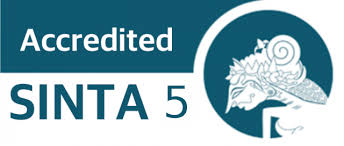Penerapan Teknologi Green House Kopi Arabika dalam Upaya Kemandirian Ekonomi Desa Sridadi Kecamatan Sirampog
Keywords:
Economic Independence, Arabica Coffee, Training, postharvest technology, greenhouseAbstract
Coffee is one of the top 3 potential regional superior products in Brebes Regency, in addition to salted eggs and shallots. Sirampog sub-district is the most dominant sub-district that produces Arabica type coffee because Sirampog sub-district is at an altitude above 1000 meters above sea level. The lack of post-harvest technology and conventional coffee processing are the main obstacles for partners in maintaining quality and increasing quantity. This has become a problem for partners in meeting the increasing market demand. The process of drying the initial drying of coffee which is done traditionally requires a lot of energy, is impractical, has the potential to reduce the flavor of coffee due to odor absorption and is difficult to do in the rainy season. Based on these conditions, the village empowerment team (PDB) of Universitas Peradaban and Unsoed funded by DRTPM in the first year (2024) conducted community service through various trainings, workshops and appropriate technology grants. In the implementation of appropriate technology, green house technology measuring 7 m x 10 m2 has been granted with a drying capacity of 2 tons. The drying results are efficient because farmers no longer need to lift and dry the coffee in the afternoon or when it rains. Farmers only need to turn it over so that the dryness is evenly distributed. The greenhouse system also dries faster because the heat is stored and trapped, and the capacity increases 3 times because the drying is arranged in 3 layers.
Downloads
References
- Budi, S., Koehuan, V. A., & Nurhayati, N. (2020). Studi Eksperimental Rumah Pengering Kopi Menggunakan Plastik Ultra Violet (Uv Solar Dryer) Dengan Mekanisme Konveksi Alamiah. LONTAR Jurnal Teknik Mesin Undana, 7(02), 38-44.
- Desa Dawuhan (2018, Juli 06) ‘Budidaya tanaman kopi di dukuh guci.’ Di akses pada 20 September 2018. Available at: https://desadawuhan.com
- Ilmi, B., & Widiantoro, H. (2021, September). Rancang Ulang Mesin Pengupas dan Pengering Biji Kopi Semi Otomatis Kapasitas 25 kg/jam. In Prosiding Industrial Research Workshop and National Seminar (Vol. 12, pp. 223-228).
- Mawardi, I., & Abidin, Z. (2020). Inovasi Rak Pengering Sistem Knockdown Dalam Upaya Penguatan Kualitas Kopi Gayo Sebagai Produk Unggulan Daerah. CARADDE: Jurnal Pengabdian Kepada Masyarakat, 3(2), 204-2011.
- Mayrowani, H. (2013, May). Kebijakan penyediaan teknologi pascapanen kopi dan masalah pengembangannya. In Forum Penelitian Agro Ekonomi (Vol. 31, No. 1, pp. 31-49).
- Pakpahan, A. (2004). Petani menggugat. Max Havelaar Indonesia Foundation.
- Sugiantoro, B., Praharto, Y. B., Sutarno, S., & Supriyana, N. (2020). Penerapan Teknologi Dry House dan Roasting Berbasis ARDUINO Kopi Arabika pada UKM di Desa Gondang, Karangreja, Purbalingga. Iteks, 12(2), 1-11.
- Statistik, Badan Pusat, Kabupaten Brebes Dalam Angka, 2023
Downloads
Published
How to Cite
Issue
Section
License
Copyright (c) 2024 sutarmin, Siti Badiatul Umroh, Ivan Akmal Nur, Undri Rastuti, Kharisma Nurmeilinda, Syahrul Saputra, Mia Anjani

This work is licensed under a Creative Commons Attribution-ShareAlike 4.0 International License.
Similar Articles
- Sri Sukamta, Ulfah Mediaty Arief, Nur Fitri Sukrina, Mohammad Hazim Putra Pratama, Amalia Khairun Nadia, Salsabila Tunnisa, Devina Ayu Septariza, Pembelajaran Praktikum Berbasis Robot Line follower untuk Meningkatkan Minat dan Motivasi Siswa SMKN 1 Semarang , Jurnal Pengabdian kepada Masyarakat Nusantara: Vol. 5 No. 4 (2024): Jurnal Pengabdian kepada Masyarakat Nusantara (JPkMN) Edisi September - Desember
You may also start an advanced similarity search for this article.

 sutarmin,
universitas peradaban,
Indonesia
sutarmin,
universitas peradaban,
Indonesia 












